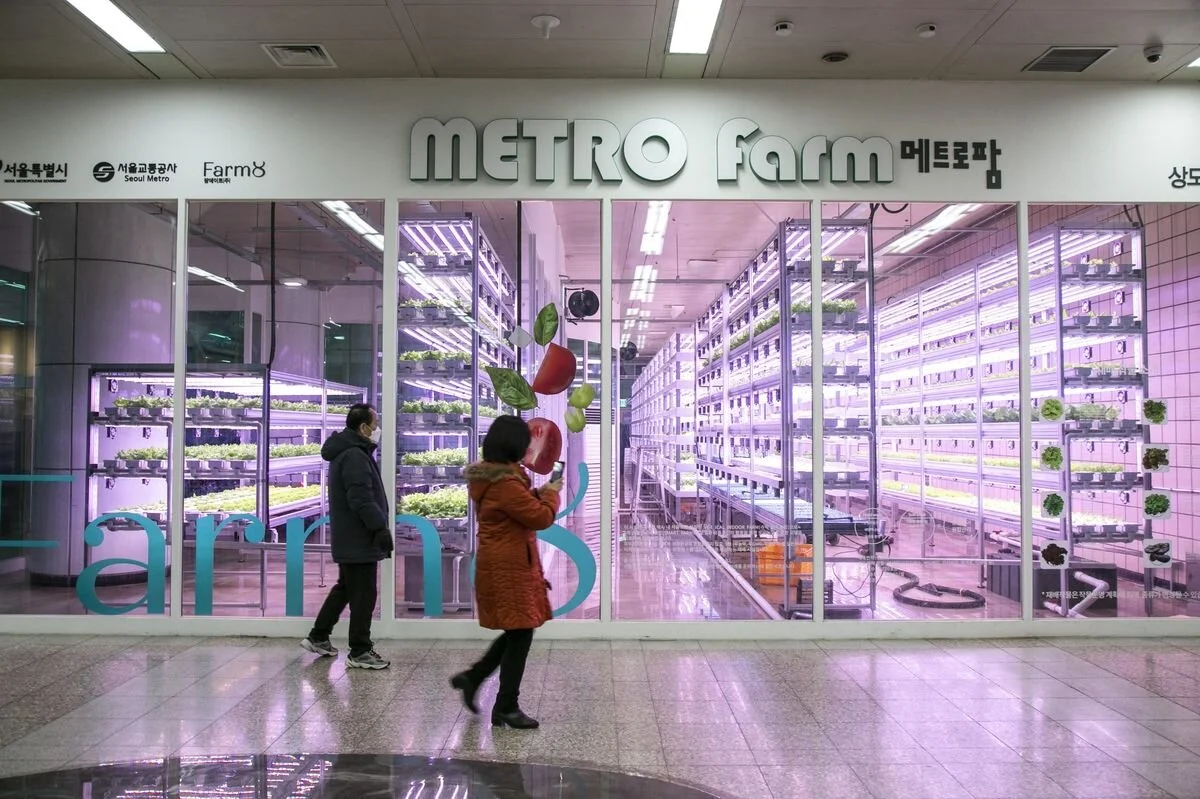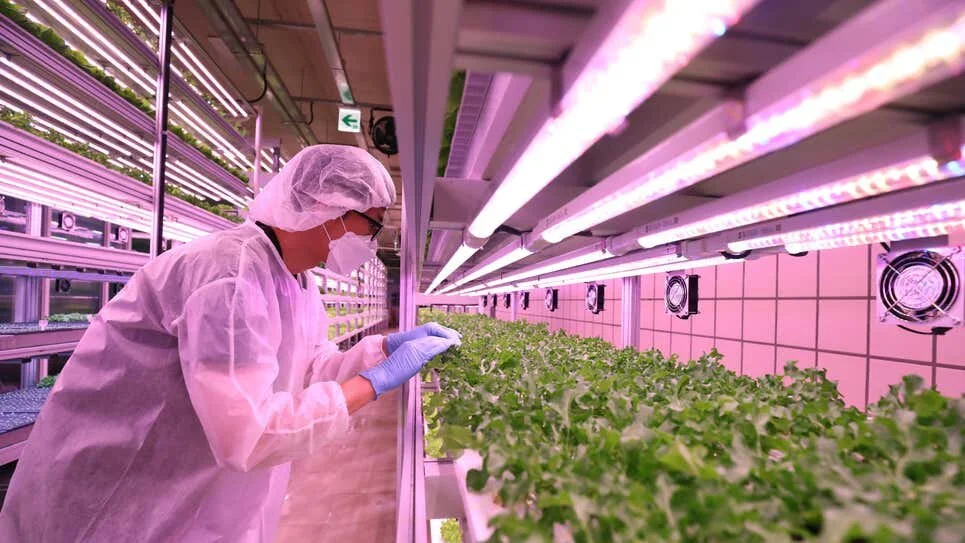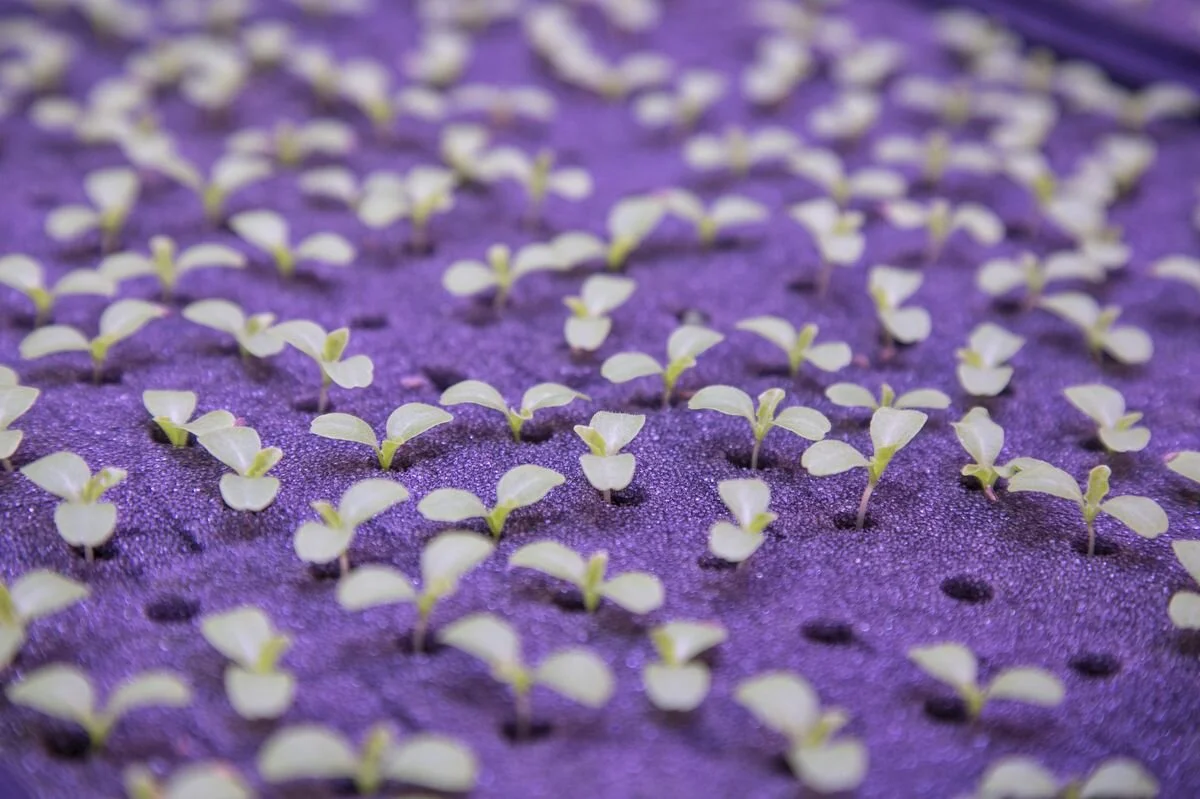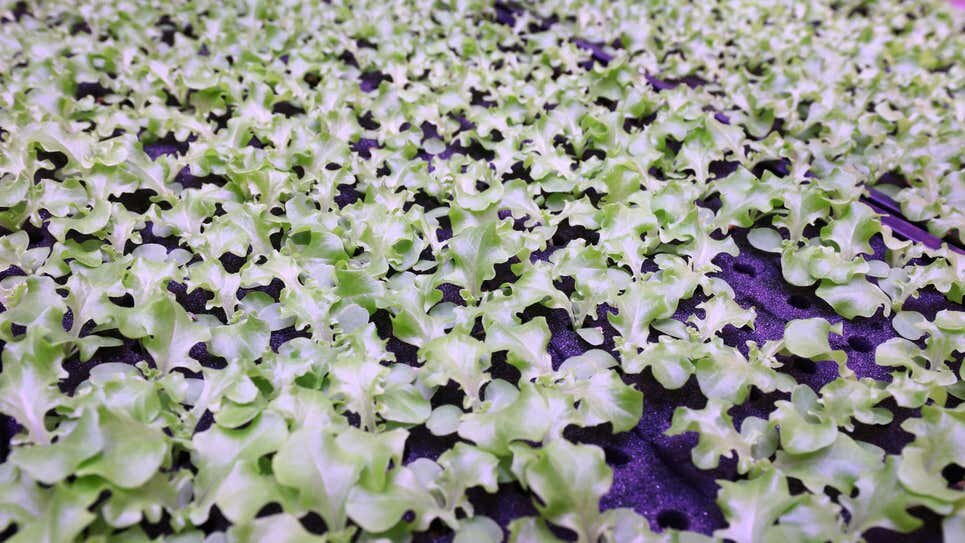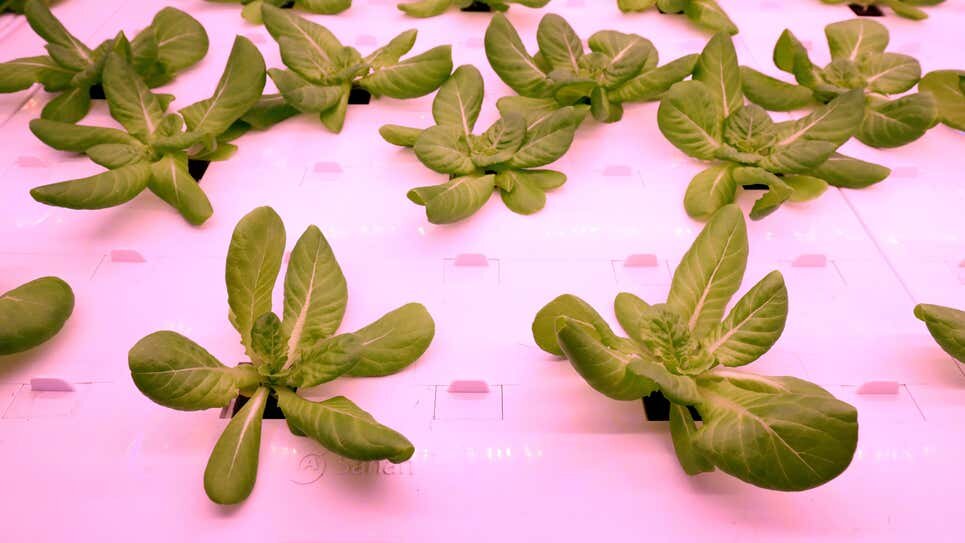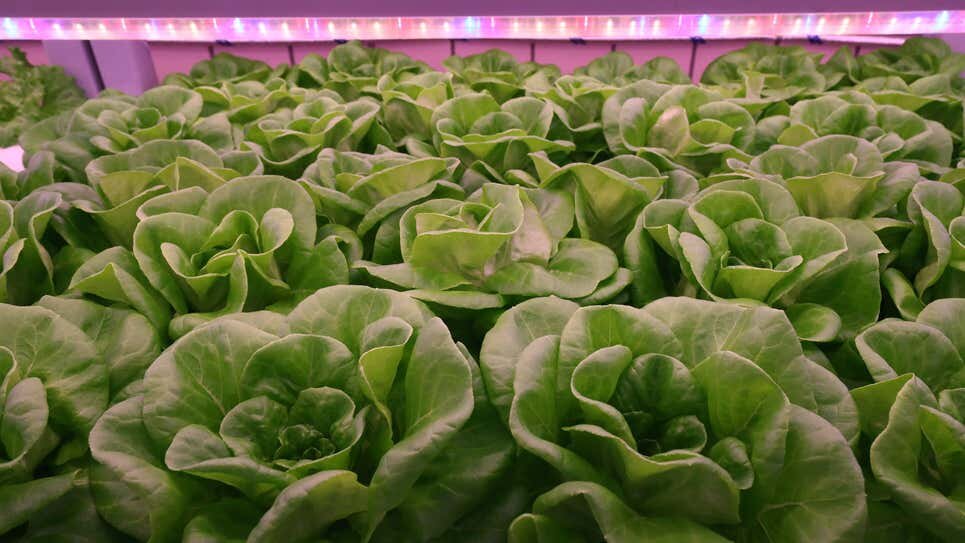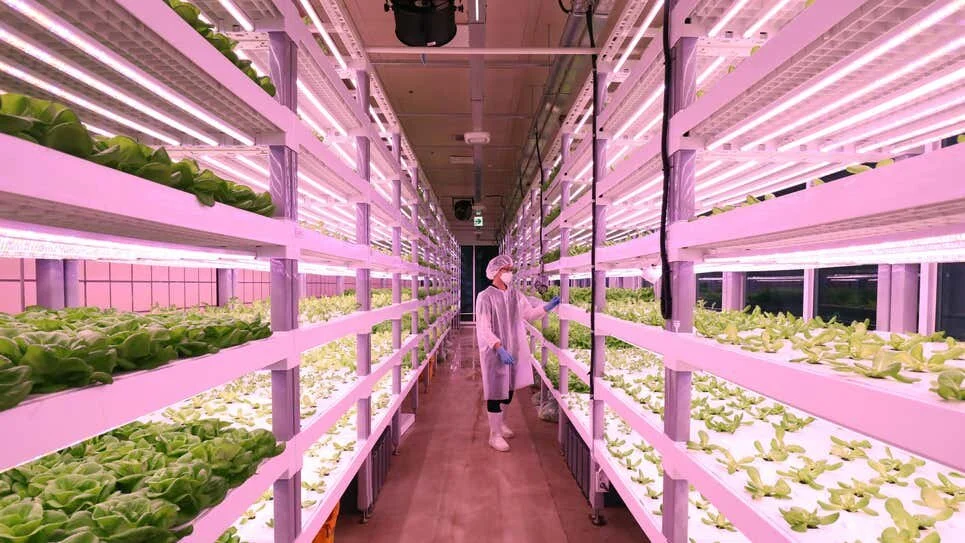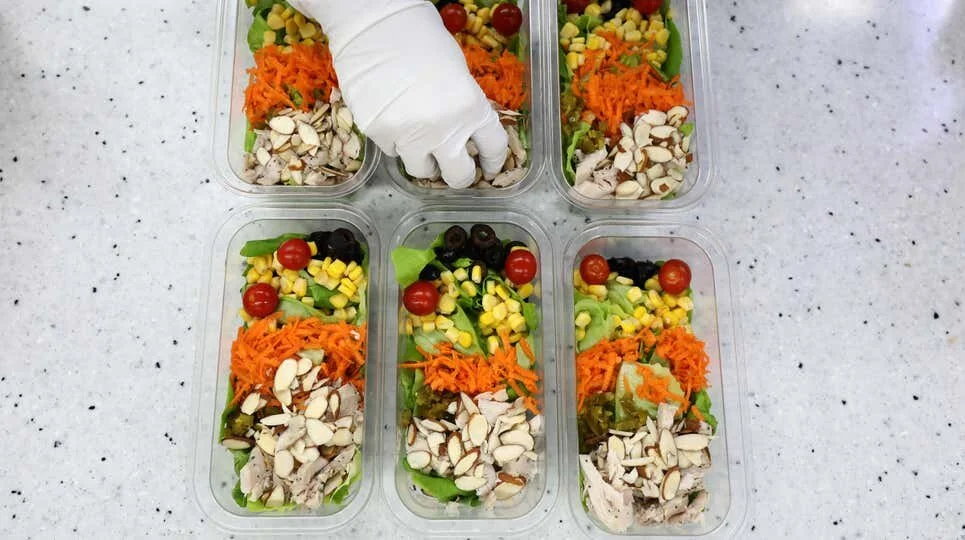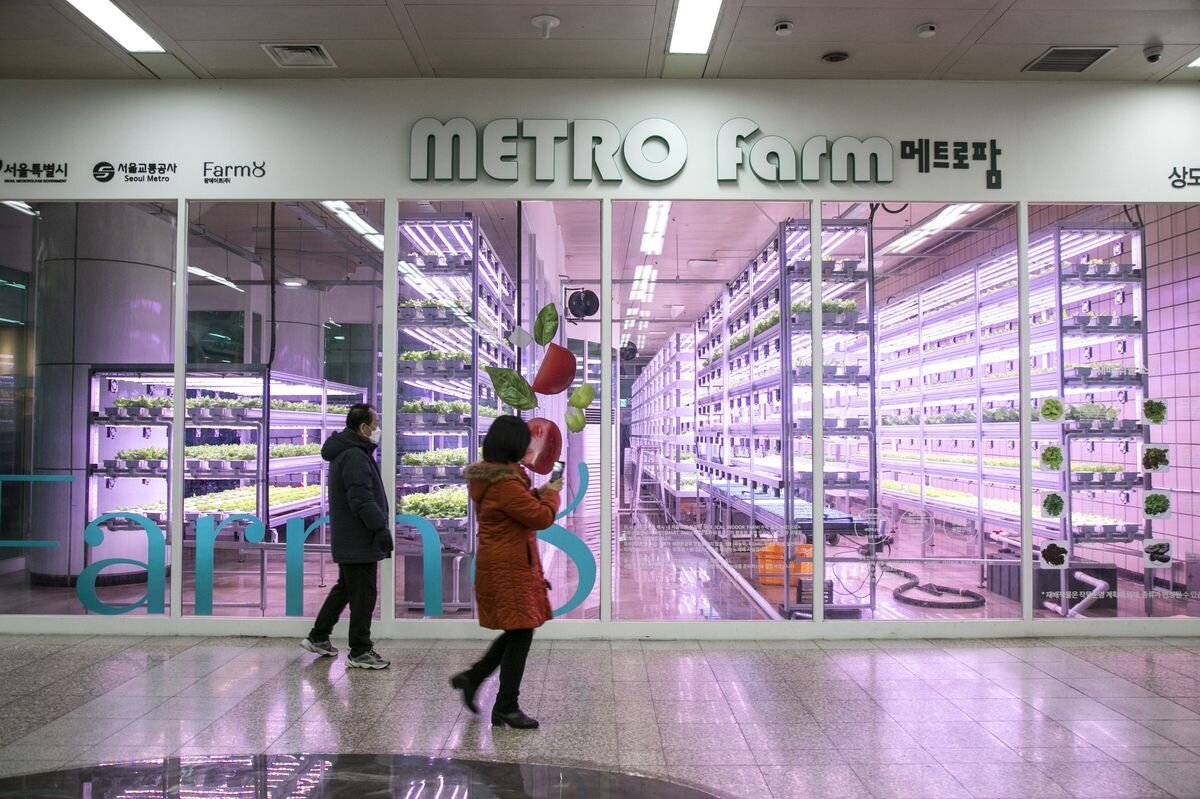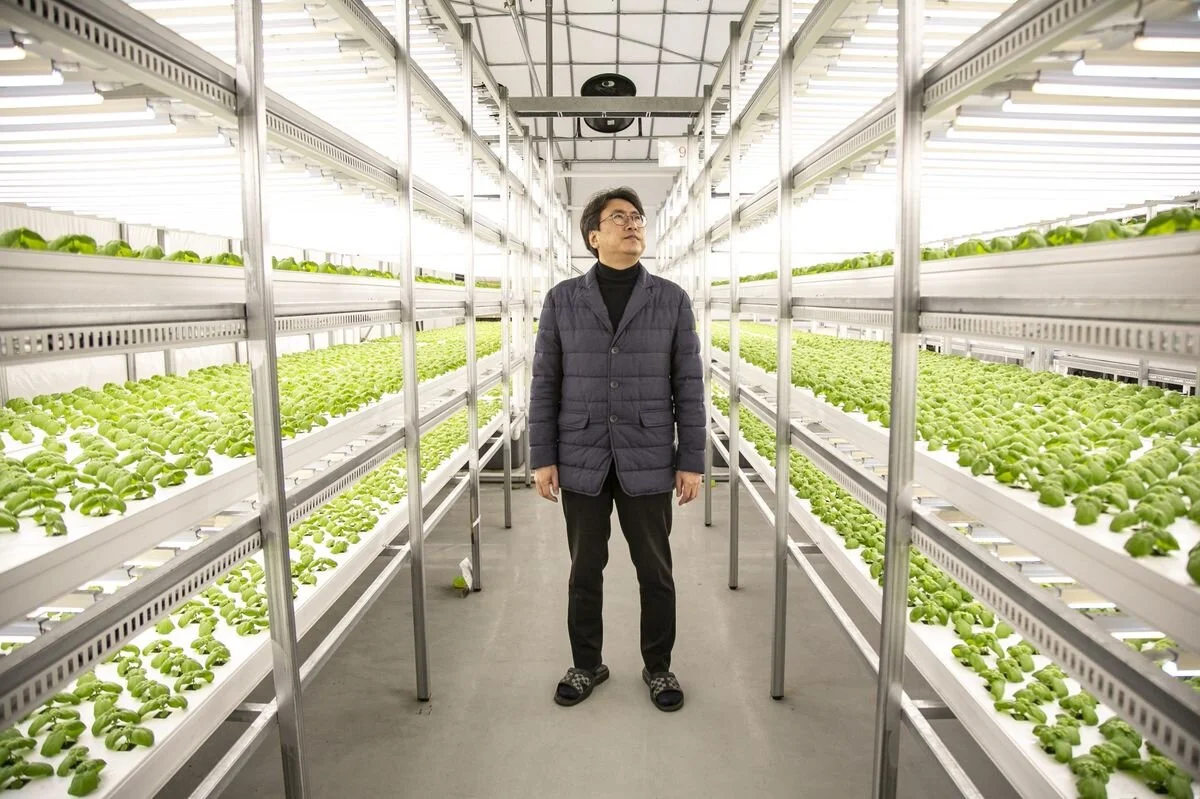
Welcome to iGrow News, Your Source for the World of Indoor Vertical Farming
This Subway Station In Seoul Doubles As A Futuristic Vegetable Garden
Managed by smart agriculture startup Farm8, the farm at Sangdo metro station is only 4,240 square feet (394 square meters), or teeny tiny compared to the average outdoor farm
May 8, 2021
Although the image above might look like something straight out of Candyland—drat, my age is showing—I am pleased to inform you that it is part of our world. These aren’t sugar creations, but nutritious plants. In fact, if you lived in South Korea, you could enjoy these leafy greens from the comfort of the Sangdo metro station in Seoul.
These vegetables are not only sold there, they’re also grown there in a vertical smart farm taken care of by artificial intelligence-equipped robots, which control the environmental factors needed for the plants to grow. Managed by smart agriculture startup Farm8, the farm at Sangdo metro station is only 4,240 square feet (394 square meters), or teeny tiny compared to the average outdoor farm.
However, it is an example of how we can use technology to make agriculture more resilient in the face of climate change, which can wreak havoc on our food security.
Marijuana And Makeup Are New Growth Areas For Vertical Farms
South Korean startup Farm 8 Co. is among a proliferation of indoor urban growers that saw sales jump during the pandemic
Heesu Lee
March 13, 2021, (Bloomberg) -- Supercharged by the need to secure local supplies of fresh vegetables during the pandemic, some vertical farms are now branching out into other high-margin areas such as medical cannabis, health supplements, and cosmetics. South Korean startup Farm 8 Co. is
Read more at: https://www.bloombergquint.com/business/marijuana-and-makeup-are-new-growth-areas-for-vertical-farms
Copyright © BloombergQuint
Underground Farms Sprout in Seoul's Subway Stations
Subterranean vegetable farms are cropping up at subway stations in Seoul in a collaboration between Seoul Metro and an agricultural startup to utilize vacant spaces and diversify the subway operator's revenue sources
Consumers give thumbs up to less polluted air
KOTARO HOSOKAWA, Nikkei staff writerJ
ANUARY 14, 2020 JSTSeoul
Metro and startup Farm8 are exploring innovative methods of food production in urban areas. (Photo by Kotaro Hosokawa)
SEOUL -- Subterranean vegetable farms are cropping up at subway stations in Seoul in a collaboration between Seoul Metro and an agricultural startup to utilize vacant spaces and diversify the subway operator's revenue sources.
Seoul Metro is renting idle spaces to Farm8, a startup with about 300 employees which supplies vegetables grown indoors efficiently and safely to retailers and restaurants.Farm8 is also testing farm cafes in three stations and plans to open more outlets in the future, as well as to export longer-life vegetables, including paprika, to Japan.
Passing through a ticket gate at Sangdo Station on Line 7 of Seoul Metro in the central area of the city, passengers can see a glass-walled room filled with leafy vegetables in an underground space. Business people and families are seen relaxing at a cafe equipped with juicer-mixers and coffee machines next to Metro Farm, which opened in September last year.
As South Korea's subway stations contain large underground spaces, most transfer hubs and other big stations have commercial areas with restaurants and shops. However, locations further away from ticket gates are often left unused because they are unattractive to retailers.
Hydroponically grown vegetables at a Metro Farm in Seoul's Dongjak district.
(Photo by Kotaro Hosokawa)
Seoul Metro has been seeking tenants that will help improve the image of subway stations without additional costs as part of efforts to make use of unoccupied spaces, said Kim Seong-jin, a Seoul Metro manager. Farm8, which runs vegetable farms nationwide, grabbed Kim's attention.
Unlike with ordinary tenants, Seoul Metro signed a 10-year contract with Farm8 to cover rents and provide a fixed amount of profit. The store also provides a space next to the cafe in which children can learn about agriculture.
Some 30 types of vegetables, including varieties of lettuce, basil, and edible flowers, are grown in a cultivation room of about 200 sq. meters. The plan is to harvest 30 to 40 kg of vegetables a day on shelves of about 4 meters and sell them as ingredients for the cafe's salads, priced at 5,900 won ($5.04), and 3,000-won vegetable juice. Vegetables that are unsuitable for consumption at the cafes will be sold to outside restaurants.
Growing hydroponic vegetables under light-emitting diodes is 40 times more efficient per unit area than growing them outdoors, according to Yeo Chan-dong, assistant manager of Farm8. The company's hydroponic vegetables are gaining popularity among consumers, particularly parents, who are wary of vegetables grown outdoors because of air pollution caused by PM2.5 -- particulate matter that measures less than 2.5 micrometers in diameter -- which is seen as hazardous in South Korea.
The company will operate stores combining cultivation rooms and cafes depending on locations, including setting up salad box vending machines at subway stations in business districts. Farm8 has already started testing "smart farms" in which artificial intelligence-powered robots will plant and harvest vegetables as well as adjust water quality. It also plans to develop new types of stores so that it can reduce operation costs, and it will open two more outlets in early 2020.
There is still so much to do to improve the profitability of the subway station business, Yeo said, but Farm8 plans to open more Metro Farm stores, betting that opening "plant factories" at subway stations used by several million people per day will have a huge advertising impact. The effort is likely to draw attention as a new method of local food production for local consumption in urban areas.
Farming Goes Underground In Seoul Subway Station
The project is called Metro Farm, and the Sangdo location is the first of five subway farms slated to open by the end of the year in a partnership between the Seoul Metropolitan Government and Farm8, a South Korean agriculture company
SEOUL, Nov. 1 (UPI) — For the past month, commuters at Seoul’s Sangdo subway station have been met with a surprising sight: a fully functioning farm growing leafy lettuce, sprouts and microgreens.
This underground farm doesn’t rely on soil and sunlight but uses special LED lighting, hydroponic growing trays and a smart network that controls factors such as temperature, humidity, CO2 levels and light intensity.
The project is called Metro Farm, and the Sangdo location is the first of five subway farms slated to open by the end of the year in a partnership between the Seoul Metropolitan Government and Farm8, a South Korean agriculture company.
The Sangdo farm opened in late October, and a second branch recently opened in Dapsimni Station.
The farms highlight the changing face of agriculture in rapidly urbanizing societies, said Kim Sung-un, senior manager of Farm8.
“As South Korea is aging and the rural population is rapidly shrinking, this is the future direction of farming,” he said. “These farms use less space and take less time to grow vegetables.”
The operation in Sangdo certainly looks like something from the future, more space station than a subway station.
Lettuce is grown on vertical shelves in the main facility, a brightly lit glass-encased 4,240-square-foot) cleanroom that must be entered through an airlock. The Sangdo farm produces around 66 pounds of greens per day, with seeding and harvesting the only human interaction necessary.
Growing times are reduced in this hydroponic system, taking around 38 days to grow lettuce from seed to harvesting, as opposed to more than 50 days in soil. The farm also absorbs CO2 and pumps out oxygen, contributing to the air quality in the subway station.
A smaller space nearby contains a fully automated robot farm that grows sprouts and microgreens, while a Farm Café sells salads made from the plants at the Metro Farm. The station also hosts an experience center that offers tours and interactive demonstrations of the farm to families and schools.
Kim said that only three employees are needed to maintain the farms across all five subway locations, and these positions are being filled by retirees and disabled workers.
“The best thing about urban farming is that it can improve the lives of people who are socially excluded,” Kim said.
The benefits of the subway farm for Seoul are widespread, said Choen So-young, who heads the Smart Farm initiative in the city government, ranging from minimizing transportation to providing a stable food supply.
“As the vegetables produced in the stations can be distributed right away, we can minimize the cost of distribution and logistics,” she said. “And the farms are located in urban areas so we can have an easy supply of manpower. In addition, as the smart farms are not affected by climate change including fine dust, they can have a stable production to supply clean and safe vegetables.”
While interest in vertical and urban farming has been on the rise in cities around the world, questions remain about its economic viability on a broad scale. One study in Japan last year found that 60 percent of indoor farm operators are unprofitable because of the cost of electricity to run their facilities.
However, South Korea, with limited available land, extreme seasons that make growing year-round difficult and electricity prices that are among the lowest in the world among developed nations, could prove an ideal urban farm market.
“Compared to the traditional outdoor farming, the vertical type of smart farming can maximize the production volume per unit area throughout the year with a stable condition,” Choen said. “So the cost efficiency is the strongest point.”
What is certain is that the coming decades are going to require radical new approaches to feeding the world.
A United Nations report from 2013 predicted that the world will need to sustainably produce 70 percent more food by the year 2050 to feed a population of nearly 10 billion. And an August report from the U.N.’s Intergovernmental Panel on Climate Change warned that arable land, which has been declining globally for decades, is under critical pressure from climate change and human development.
In the meantime, commuters at Sangdo Station are getting a taste of the future.
Kim Jie-eun, a 30-year-old teacher, said she lived nearby and was intrigued by the new addition.
“I come through the station often and I noticed the farm,” she said while eating a salad from the Farm Café with a friend.
“It was the first time I had ever seen something like this and I wanted to try it, especially because I eat a lot of salads. I like the fact that it’s really fresh. And the idea is really new, innovative and creative. I hope more residents will try it.”


